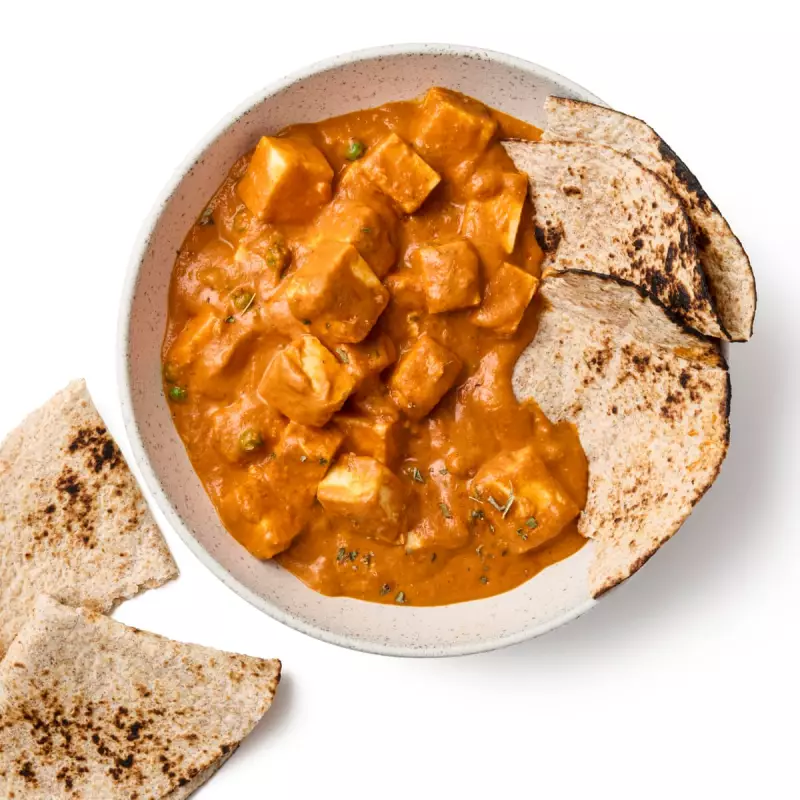
The Ultimate Guide to Crafting Perfect Butter Paneer
Butter paneer, known in Hindi as paneer makhni, stands as one of India's most celebrated and widely adapted vegetarian dishes. This luxuriously rich curry, a meat-free relative of butter chicken, is believed to have originated in the post-war kitchens of Delhi's Moti Mahal restaurant, though its exact creator remains a hotly debated topic. Despite its fame in India, where chef Sanjeev Kapoor notes it as a restaurant bestseller, it curiously maintains a lower profile on UK menus, often overshadowed by favourites like chicken tikka masala.
Mastering the Paneer: To Marinate or Not?
The foundation of any butter paneer is, of course, the paneer itself. This unsalted, cottage-style cheese offers a texturally satisfying, blandly creamy base that beautifully complements rather than competes with its sauce. While you can purchase paneer from most supermarkets or South Asian specialists, making your own at home with milk and lemon juice is also an option.
Approaches to preparing the paneer vary significantly among chefs. Nisha Katona of Mowgli is unique in marinating her cheese in a tandoori masala blend, which imparts an appetising red colour. However, firm commercial paneer can be too dense to absorb flavours effectively, making this technique potentially more successful with a crumblier, homemade version. Meanwhile, Meera Sodha coats her paneer in a blend of garlic, ginger, chilli powder, lemon juice, salt, turmeric, and yoghurt before baking it for 25 minutes. In contrast, chef Kaushy Patel opts for deep-frying the cheese before incorporating it into the curry.
For this perfect recipe, we follow the method of chefs Vivek Singh and Sanjeev Kapoor, who add the paneer right at the end of cooking. This maintains the delightful contrast between the soft, neutral cheese and the rich, spiced sauce. That said, if you're cooking for meat-eaters who might prefer a more flavourful protein, Sodha's pre-cooking method provides a crunchy, spiced coating.
Crafting the Signature Silky Sauce
The soul of butter paneer lies in its velvety, aromatic sauce. Most recipes begin with a base of onion, ginger, and garlic, though some chefs like Kapoor use only garlic. To enhance the natural sweetness that the dairy components bring, this recipe calls for well-softened, almost caramelised onion and root ginger.
The spice profile is typically straightforward, avoiding an overwhelming list. Common additions include turmeric, chilli, cardamom, and garam masala. The zest of green cardamom pairs exquisitely with the dairy's richness, while the sweet spices in garam masala align perfectly with the dish's overall flavour. A crucial, almost non-negotiable ingredient is dried fenugreek leaves, known as methi. Their uniquely bitter, slightly woody, and oddly fruity flavour provides a distinctive depth that elevates the entire dish.
For the tomato component, a smooth, velvety texture is paramount. Using passata or finely chopped tinned tomatoes can save you the job of blending, though if you use standard chopped tomatoes, a quick blitz with a hand blender will achieve the desired consistency. Given that substandard fresh tomatoes can result in a thin, salsa-like sauce, they are not recommended unless they are exceptionally flavourful. A spoonful of tomato puree is also recommended to supercharge the depth of flavour.
The Final Touch: Dairy and Richness
True to its name, butter is a key player, but the quantity matters. While Sanjeev Kapoor's recipe suggests a staggering four tablespoons per person, this can lead to an overly rich result. This perfect version finds a balance by incorporating double cream for mouthfeel and a couple of judicious spoonfuls of butter for its irreplaceable flavour. Some chefs, like Vivek Singh, add complexity with boiled cashew paste, which also presents a compelling avenue for creating a vegan version of this dish.
For those seeking simplicity, Meera Sodha's one-pan, oven-baked method is ridiculously delicious and extremely hands-off. And for an extra pop of flavour and colour, consider stirring in some frozen peas towards the end of cooking, as Nisha Katona does, or finishing the dish with a sprinkle of fresh coriander.
This perfect butter paneer is best served with flatbreads like naan or roti, accompanied by a side of saag or a fresh khachumber salad for a complete and utterly satisfying feast.





